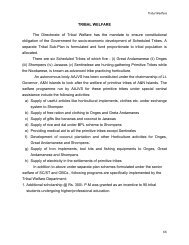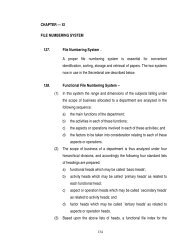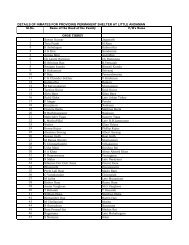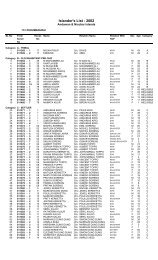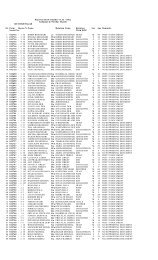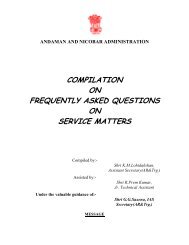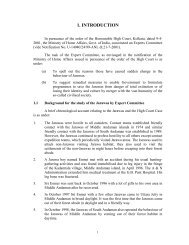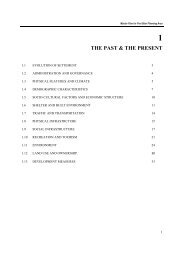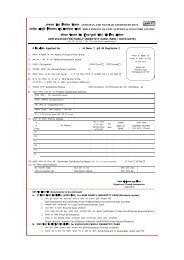Part III - Andaman and Nicobar Islands
Part III - Andaman and Nicobar Islands
Part III - Andaman and Nicobar Islands
Create successful ePaper yourself
Turn your PDF publications into a flip-book with our unique Google optimized e-Paper software.
28<br />
the houses of the Local Borns at least 40% are Kutcha <strong>and</strong> 20%<br />
are semi pucca ie. Having brick- built floors but without having<br />
pucca walls <strong>and</strong> roof <strong>and</strong> that in the remaining 40% the floors<br />
<strong>and</strong> the walls are brick built, but the roofs are made with sheet<br />
roofing. It will be quite proper to conclude that even though in<br />
the city area there may be some pucca houses, in the rural areas<br />
the houses are mostly kutcha or semi pucca i.e having brick<br />
built floors but walls <strong>and</strong> roofs made with flimsy material.<br />
Now we turn to see how may are the job holders amongst<br />
the Local Born <strong>and</strong> of which Category.<br />
From columns 8 <strong>and</strong> 10 of the page 3 of the Classification<br />
Table it appears that there are 54 Group A post-holders <strong>and</strong> 82<br />
Group B post holders in the community. This is considerably<br />
more than the other three communities. But yet the percentages<br />
come nowhere near the population. – equivalent proportion of<br />
the Community, since there are 344 Group A post <strong>and</strong> 458<br />
Group B posts in the local Administration. Even then Shri<br />
Govind Ram says that the number of Group A post holders will<br />
not be more than 45/46 <strong>and</strong> that of group B post holders not<br />
more than 70/75. We were told at Tushnabad that of the 30<br />
graduates in the area, about 15 are unemployed. There are only<br />
two clerks <strong>and</strong> two teachers <strong>and</strong> of the two Diploma Holders of<br />
the Community only one could get a job. In Hobdypur there are<br />
4 teachers, one clerk <strong>and</strong> one nurse. There is no doctor or<br />
Engineer in either village.<br />
Conclusion<br />
1. The discrimination suffered by the Local Born is akin to<br />
caste-discrimination <strong>and</strong> acting as a damper to his spirit, it<br />
induces him to keep himself within his shell <strong>and</strong> not to<br />
prepare himself for competing with the mainl<strong>and</strong>er who is<br />
already in a better position socially, educationally <strong>and</strong><br />
financially.<br />
2. Excepting the well educated city-based the Local Born in<br />
the rural areas are employed in agriculture <strong>and</strong> such other<br />
labour intensive jobs. Quite a large number has to work as<br />
day- labourers for survival <strong>and</strong> the women <strong>and</strong> children of<br />
the community also join h<strong>and</strong>s with the adult males in<br />
their agricultural pursuits. Though mainly agriculturist



